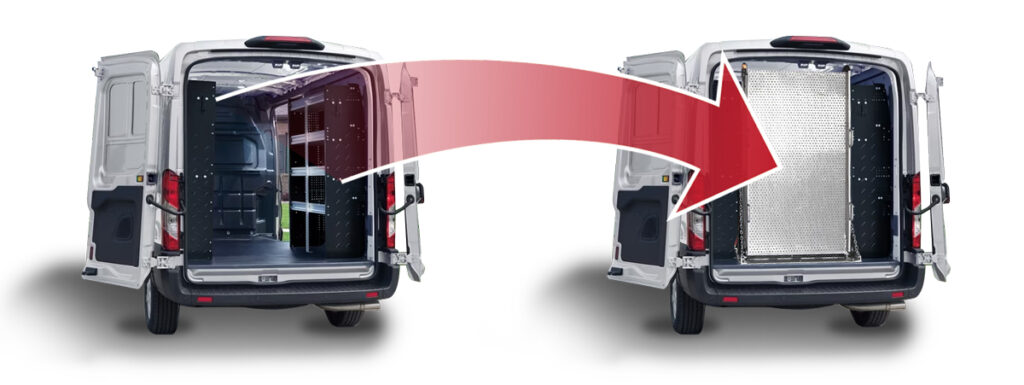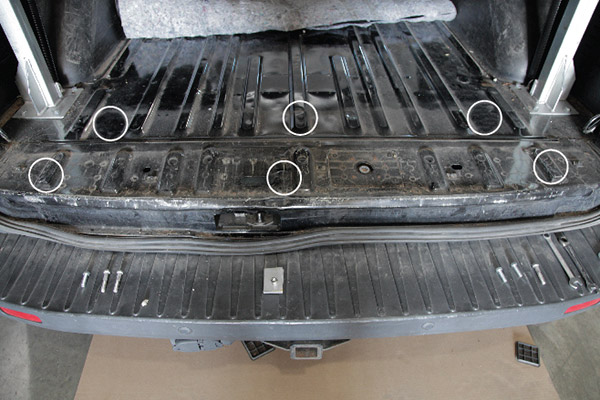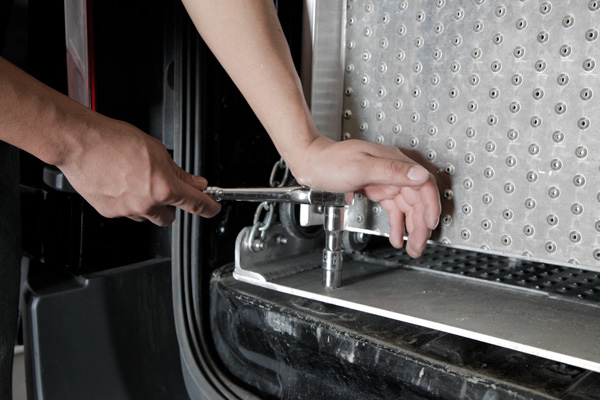Why drilling into your van floor makes a stronger, safer, lower-maintenance ramp

If you’re looking to purchase a cargo van ramp, and this is your first time in the market, you may have noticed that some van ramp manufacturers are offering a “No Drill” installation solution for their folding ramps. It sounds wonderful, doesn’t it? Why would you want to drill into the floor of your van to install a ramp if you don’t have to?
That’s a really good question. For over a decade, HandiRamp has manufactured and installed thousands of ramps in commercial vans of all shapes and sizes and we’ve NEVER offered a “no-drill” ramp to a customer. So, that begs the question: do all installation methods offer the same long-term power and reliability? Will one method make my ramp less stable and more difficult to use compared to another?
Let’s take a look together!
The Installation Methods
For the purpose of clarity, we’re going to focus on the two main ways of installing your new ramps onto your vans: the direct installation into the floor of the van and the “no-drill” install system merging custom-cut brackets and existing attachment points.
To compare these methods, we’re going to use the Ram Promaster and Ford Transit vans as our baseline controls to see how the different installs apply differently to the same vans. The Ram Promaster is one of the most popular standard cargo van models and the Ford Transit is one the most common city cargo van models, so these two vans act as solid representations for most cargo van models.
Direct-to-floor Installation
Here at HandiRamp, we’ve found the best way to install cargo van ramps is by getting straight to the point and drilling them directly into the floor of your cargo van. All of our ramps are designed with safety, longevity, and a simple, do-it-yourself installation process in mind. In fact, two people can finish the entire process in just two hours on average. Bolting the ramp to the floor of your van offers the greatest degree of maneuverability and customization when installing, no matter which ramp size or van model pairing you’re working with.
More importantly, this method will also leave you with the strongest connection between your ramp and your van, as bolts drilled precisely where you need them will always outlast anything reliant on cookie-cutter attachment points.

Both the Ram Promaster and Ford Transit are very versatile cargo vans and are compatible with all five different lengths of HandiRamp’s cargo van ramps. Generally, city vans like the Ford Transit intended for urban use are better suited for shorter ramp lengths, but with the guaranteed strength of a bolted direct-to-floor installation, you can feel confident that even the longest and widest van ramps will continuously function perfectly in your van. If you happen to have any other model of van besides these two, you can check HandiRamp’s amazing Cargo Van Ramp Configurator to discover which ramp sizes are just right for your business’s vans.
No-Drill Installation Using Existing Attachment Points
All vans’ door hinges, trim pieces, latches, and other items are bolted onto the body of the vehicle. Both the bolts and the items that are attached are specifically designed for their singular purpose with little margin built in for additional loads or forces. These latches, hinges, and baseplates will therefore be considerably weaker connection points for your ramp than any attachments you custom-drill directly onto the van yourself.
The weaker the connections between your ramp and your van, the more likely that problems will arise down the road. From hinges pulled out of alignment so doors don’t close, to rattles, distortions, and other bent metal, attaching a ramp that weighs over 100 pounds to a bolt not designed for the load is not just a bad idea but a crucial safety issue. Not only could this be dangerous to you and your employees, but you would have to pay again to repair your ramp and van to continue your business operations. Save time, money, and headaches by just ensuring your cargo van ramps are attached the best way possible, which is directly to your van and not using the existing attachments.
Direct-to-floor Installation Protects Your Ramp, Van, and Business
Imagine your landscaping business is hard at work utilizing your brand-new cargo van ramp to load and unload equipment between job sites. The day has been fantastically productive with no interruptions before disaster strikes and the new ramp you just purchased breaks free from your van! In a rush to get them attached and ready for work that day, you installed them using this cool new method you found called the “no-drill” process but now all of the plates have snapped out of the empty bolts under the extreme weight of your machinery. You are a professional and subject your equipment to strenuous tests throughout the day, and you need it to be able to withstand the stress and deliver so you can too.
Unfortunately, you chose the wrong installation method and now with no way to unload your equipment, your business is down for the count until costly repairs can be made and new ramps installed. This time you’ll be sure to drill them in directly to avoid any future accidents.

If reading about these different ways of setting up your new cargo van ramps is starting to give you any anxiety, we’ve got your back. We’ve got a panel of ramp experts awaiting your call, ready to answer any questions about installation. And even though our ramps have ease of installation built into the design, we also offer installation services at our Kenosha, WI location and some on-site installs around the country from our other hubs in Denton, NC, and Glendale, AZ.
Decision Time
You can rest assured knowing any HandiRamp cargo van ramp purchase you make will be supported by the best installation method possible. If you’d like to learn a little more before making a final decision you can read through the rest of our Handi blog to find helpful tips and product descriptions like choosing the right length cargo van ramp for your business and which ramp width best suits your business’s needs.
